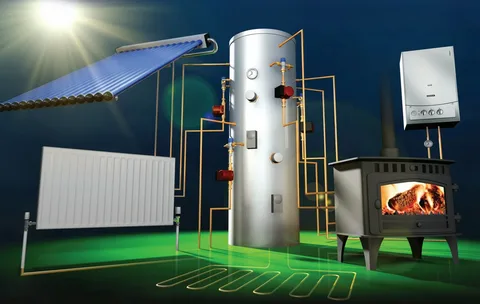With its accuracy, efficiency, and adaptability, woodworking CNC (Computer Numerical Control) technologies have completely changed the woodworking business. These are the top five options that are renowned for producing faultless outcomes:
- AXYZ CNC Routers
CNC router systems fit for a variety of applications, including woodworking, are AXYZ’s area of expertise. Precision motion control, high-performance spindles, and sturdy construction characterize their equipment. From entry-level machines to sophisticated models with automated tool changers and rotary devices, AXYZ provides a variety of CNC solutions designed for woodworking applications. Woodworkers may complete their tasks with perfection thanks to their user-friendly software and extensive assistance.
- Multicam CNC Routers
One of the top producers of CNC routers, Multicam is renowned for its accuracy and adaptability. Their CNC woodworking solutions are available in a range of sizes and configurations to meet the demands of diverse projects. Woodworkers may easily accomplish elaborate designs using multicam machines’ capabilities, which include vacuum hold-down systems, high-speed spindles, and automated tool changeover. Woodworking experts all around the world use Multicam CNC routers because of their dependable performance and user-friendly software.
- CNCRouterParts
A variety of CNC router kits and parts are available from CNCRouterParts for do-it-yourselfers and small enterprises. With everything needed to assemble a CNC machine from start included in the kits, customers may tailor their configuration to meet their unique needs. The precise components, robust construction, and material compatibility of CNCRouterParts’ kits make them perfect for woodworking applications. With the aid of their community forums and online resources, CNCRouterParts offers users all-encompassing support to ensure that their CNC woodworking projects turn out well.
- Techno CNC Systems
Techno CNC Systems manufactures CNC routers designed for precision woodworking and other applications. Their machines feature heavy-duty construction, high-performance spindles, and advanced control systems for optimal cutting accuracy. Techno CNC routers are available in various sizes and configurations to accommodate different project needs. With their user-friendly software and responsive customer support, Techno CNC Systems enables woodworkers to achieve flawless results in their projects, whether they’re creating intricate carvings or large-scale furniture pieces.
- Next Wave Automation
Next Wave Automation specializes in CNC machines and accessories for woodworking enthusiasts and professionals. Their CNC routers are known for their compact size, affordability, and ease of use. Next Wave Automation offers a range of CNC solutions suitable for a wide range of woodworking projects, from small-scale hobbyist projects to large-scale production runs. With their intuitive software and comprehensive documentation, Next Wave Automation makes it easy for woodworkers to achieve flawless results in their CNC woodworking endeavors.
These woodworking CNC solutions represent some of the top choices available in the market, each offering unique features and capabilities to meet the diverse needs of woodworkers. Whether you’re a hobbyist looking to create intricate designs or a professional seeking to optimize production processes, investing in a quality CNC router can significantly enhance your woodworking capabilities and help you achieve flawless results in your projects.
In addition to the hardware itself, software plays a crucial role in CNC woodworking, enabling users to design, simulate, and execute their projects with precision and efficiency. Many CNC router manufacturers provide proprietary software solutions tailored for their machines, offering features such as 3D modeling, toolpath generation, and simulation capabilities. These software packages are designed to streamline the CNC workflow and optimize toolpath generation for optimal cutting results.
In addition to proprietary software, there are also third-party CAD/CAM software options available for CNC woodworking, offering advanced features and compatibility with a wide range of file formats. Popular CAD/CAM software packages for woodworking, essential for optimizing woodworking CNC services, include Vectric Aspire, Autodesk Fusion 360, and SolidWorks CAM. These software solutions provide powerful tools for designing complex shapes, generating toolpaths, and simulating machining operations, allowing woodworkers to achieve precise and flawless results in their projects. Integrating these software solutions into woodworking CNC services enhances design capabilities and streamlines the CNC workflow, ultimately leading to more efficient production processes and impeccable results in woodworking projects.
When selecting CAD/CAM software for CNC woodworking, it’s essential to consider factors such as ease of use, compatibility with your CNC machine, and the specific features you require for your projects. Some software packages offer specialized modules for woodworking, providing dedicated tools for tasks such as 3D carving, joinery, and engraving. By investing in the right CAD/CAM software, woodworkers can enhance their design capabilities and streamline their CNC workflow, ultimately leading to more efficient production processes and flawless results in their projects.
In addition to hardware and software considerations, proper tooling and material selection are also essential for achieving flawless results in CNC woodworking. The choice of cutting tools, such as end mills, router bits, and engraving tools, can significantly impact the quality of the final output. High-quality tools made from carbide or high-speed steel offer superior durability and cutting performance, resulting in cleaner cuts and smoother finishes on woodworking projects.
When selecting cutting tools for CNC woodworking, it’s crucial to consider factors such as tool geometry, flute configuration, and coating options. Different types of cutting tools are suited to specific materials and cutting applications, so it’s essential to choose the right tool for the job. For example, spiral upcut router bits are ideal for clean edge cuts and chip evacuation in wood, while ball nose end mills are suitable for 3D contouring and sculpting operations.
In addition to cutting tools, material selection also plays a vital role in CNC woodworking. Different types of wood have distinct properties in terms of hardness, grain direction, and machinability, which can affect the cutting process and the quality of the final result. Common woods used in CNC woodworking include hardwoods such as oak, maple, and cherry, as well as softwoods such as pine and cedar. Exotic woods and engineered wood products are also popular choices for specialized applications.
When selecting materials for CNC woodworking, it’s essential to consider factors such as the project requirements, budget, and availability of materials. Some woods may be more challenging to machine than others due to their hardness or grain structure, so it’s crucial to choose materials that are well-suited to your CNC machine’s capabilities and cutting tools. By selecting the right materials and tooling for your CNC woodworking projects, you can ensure optimal cutting performance and achieve flawless results in your work.
In addition to tooling and material selection, proper machine setup and calibration are also critical for achieving flawless results in CNC woodworking. Even the most advanced CNC routers require periodic maintenance and adjustment to ensure optimal performance and cutting accuracy. Routine tasks such as checking and adjusting machine alignment, cleaning and lubricating moving parts, and replacing worn or damaged components can help prevent issues such as tool deflection, vibration, and inaccuracies in cutting dimensions.
Calibrating your CNC machine’s spindle speed, feed rate, and cutting parameters is also essential for achieving optimal cutting performance and surface finish in woodworking projects. By fine-tuning these parameters based on the material being machined, the type of cutting tool used, and the desired cutting depth and speed, you can achieve optimal chip evacuation, minimize tool wear, and maximize cutting efficiency. Additionally, performing test cuts and verifying dimensional accuracy using calipers or micrometers can help ensure that your CNC woodworking projects meet your quality standards.
Proper dust and chip management are also essential considerations in CNC woodworking, as the cutting process generates a significant amount of waste material that can affect cutting performance and surface finish. Using effective dust collection systems, chip brushes, and spoil boards can help minimize chip buildup, prevent chip recutting, and maintain optimal cutting conditions throughout the machining process.





